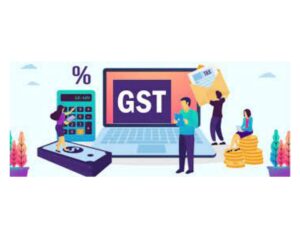User Intent
Users searching for this topic want to understand whether Goods and Services Tax (GST) applies to IT export services, how it works, its benefits, limitations, and a comparative analysis with domestic IT services taxation.
Introduction
The IT industry in India has witnessed significant growth, with many companies exporting software services worldwide. However, when it comes to taxation, businesses often wonder whether GST applies to IT export services. Understanding the tax structure is crucial to ensure compliance and maximize tax benefits.
In this article, we will explore the GST applicability for IT export services, covering essential aspects like its definition, application, benefits, limitations, and a comparative analysis. Let’s dive in!
Definition: What Are IT Export Services?
IT export services refer to software development, consultancy, technical support, and other technology-related services provided by an Indian company to a foreign client. As per GST laws, services qualify as exports if:
- The supplier is located in India.
- The recipient is outside India.
- The service is consumed outside India.
- Payment is received in convertible foreign exchange or Indian rupees wherever permitted.
These criteria help classify IT services as exports, making them eligible for GST exemptions under specific conditions.
Application of GST on IT Export Services
Under Indian GST laws, export of services is considered a zero-rated supply as per Section 16 of the IGST Act. This means:
- No GST is levied on IT export services.
- Businesses can claim Input Tax Credit (ITC) on goods and services used in providing export services.
- Exporters have two options for GST compliance:
- With Payment of IGST: Pay IGST on exports and claim a refund later.
- Without Payment of IGST (LUT/Bond): Submit a Letter of Undertaking (LUT) to export without tax and claim ITC.
- GST registration is mandatory for IT companies even if they export services, provided their turnover exceeds the exemption limit.
- Documentation requirements: Proper invoices, bank receipts, and LUT must be maintained to avail tax benefits.
Benefits of GST on IT Export Services
1. Zero Tax Burden
Since IT exports fall under zero-rated supplies, businesses do not have to pay GST, reducing their overall tax burden.
2. Input Tax Credit (ITC) Availability
IT exporters can claim refunds on ITC, lowering operational costs and boosting profitability.
3. Increased Global Competitiveness
With no GST implications, Indian IT companies remain competitive in global markets by offering cost-effective services.
4. Simplified Compliance Process
Using LUT, exporters can avoid paying IGST upfront, streamlining financial operations.
5. Encouragement for IT Startups
Startups in the IT sector benefit from tax refunds and exemptions, allowing them to scale efficiently.
Limitations of GST on IT Export Services
1. Complex Refund Process
While ITC is claimable, the process of filing refund applications can be time-consuming and prone to delays.
2. Risk of Compliance Issues
Incorrect filing of GST returns, LUTs, or refund applications can lead to penalties and legal complications.
3. Dependence on Documentation
Businesses must maintain precise records to prove service exports, adding to administrative burdens.
4. Fluctuating Foreign Exchange Regulations
Since payments must be received in convertible foreign exchange, changing RBI guidelines can impact export transactions.
5. Ambiguity in Certain IT Services
Some services, like offshore software licensing or cloud-based solutions, face classification challenges under GST, leading to uncertainty.
Comparative Table: GST on IT Exports vs. Domestic IT Services
| Feature | IT Export Services (Zero-Rated) | Domestic IT Services (Taxable) |
|---|---|---|
| GST Rate | 0% | 18% (Standard GST Rate) |
| Tax Burden | No GST, eligible for refunds | GST applicable |
| Input Tax Credit | Available | Available |
| Compliance Method | LUT/Bond for tax-free supply | GST payable on each sale |
| Payment Mode | Foreign currency/approved INR | INR |
| Documentation | LUT, Invoices, Bank receipts | Regular GST invoices |
Conclusion
In summary, GST is not applicable on IT export services as they fall under zero-rated supply. However, exporters must follow compliance procedures such as LUT submission, maintaining documentation, and filing GST returns to claim tax benefits. The availability of Input Tax Credit (ITC) makes the process more financially viable, but businesses must navigate the refund complexities efficiently.
Understanding these provisions ensures smooth operations for IT exporters while keeping them compliant with GST regulations.
Frequently Asked Questions (FAQs)
1. Is GST registration mandatory for IT exporters?
Yes, IT companies exporting services must register for GST if their turnover exceeds the exemption threshold.
2. Can IT exporters claim refunds on GST paid for business expenses?
Yes, exporters can claim refunds on Input Tax Credit (ITC) for GST paid on goods and services used in exports.
3. What happens if an IT exporter fails to submit an LUT?
Without an LUT, the exporter must pay IGST on exports and then apply for a refund, leading to cash flow challenges.
4. Do IT exporters need to pay GST on software sold abroad?
No, software exports qualify as zero-rated supplies if they meet the required conditions.
5. How long does it take to get a GST refund for IT export services?
Refunds typically take 30-60 days, depending on document verification and government processing speed.
To Visit https://www.gst.gov.in/
For further details access our website https://vibrantfinserv.com/

